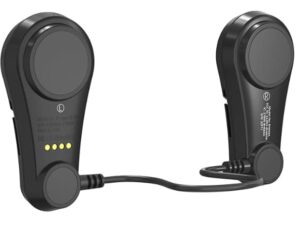Every household in the world nowadays has at least one toilet and you have probably used it thousands of times. However, have you ever wondered how toilets actually work? To fully understand how toilets operate you need to know what they consist of.
Toilet Components
The two main parts of almost every toilet are the toilet bowl and the water tank.
Toilet Bowl
If you take a closer look at the side of the toilet bowl, you can see that it has a u-shaped part that goes into the floor. This portion is also known as the siphon. It is the most essential part of a toilet bowl as its design allows flushing. A siphon is the kind of pipe that moves the liquid from a big reservoir upwards and then the liquid goes down due to the vacuum.
Once a big amount of liquid is forced into the large reservoir, the toilet bowl in this case, gravity does the rest of the job. It moves the liquid into the u-shaped portion of the bowl and then down the drain pipe. Due to this type of design, even if you took off the toilet tank and poured a two-gallon bucket into the toilet bowl, it would still flush.
Water Tank
Now that you know a toilet can actually function even without the water tank you must be wondering what is the purpose of the tank. The tank acts like the two-gallon bucket being poured into the bowl. However, the tank is much more precise and fills itself back accurately. The toilet tank is constructed of a couple of simple parts.
The flushing process begins when you push the handle. This handle is attached to a chain that lifts up the rubber flapper located at the bottom of the water tank. As the flapper is made out of rubber, it creates a seal between the bowl and the tank. So, when you press the handle, the chain lifts up the flapper, breaking the seal and allowing the water to pour into the bowl.
After the flushing is done, water flows through the supply valve, filling the tank back up again. The rubber flapper gets back into its position, creates a seal and prevents any more water from flowing into the toilet bowl.
As you know these are the two main components of a toilet. Pretty basic, but if you’re like me, you’re interested in finer details. If you desire vast toilet information, then be sure to check this blog by clicking here, which covers toilet DIY guides and reviews for your home. At the end you will not only know how to install a toilet but purchase one too.
Okay, let’s move on to the next topic geared more towards the actual flushing functions of a toilet.
What Happens After Flushing
Have you ever wondered where the waste goes after flushing? When you push the handle on your toilet tank and the toilet flushes, the waste goes down a pipe called a sewer. This pipe is also connected to other parts of your house such as bathtubs, showers, etc. All the waste and leftover water flow downhill from your house. They join those from other households and then flow into bigger sewer lines.
Do All The Toilets Flush The Same Way?
This is a very common question as you have probably heard that there are different kinds of toilets available on the market. First things first, most of the toilets are quite similar when it comes to the flushing process. They may not have the same construction, but the process itself is pretty similar.
But still, different kinds of toilets have different features. Some of them might produce more noise while flushing than others. There are also systems that are more water-efficient than others. Dual flush systems also allow you to use the partial flush that consumes way less water and is meant to be used only for liquid waste.
Our Final Thought
Although the flushing process might seem complicated at first, once you break it down into a few simple steps you realise that it is quite simple. Now that you know exactly how most toilets operate, you might be able to solve some smaller, simple issues when they occur.
Keep in mind that most of the parts inside a toilet tank are replaceable. Therefore, if your toilet doesn’t flush as well as before, it could be that some small parts need replacement. Replacing them on your own is probably going to be simple. Still, if you are not sure you can do it yourself, we highly recommend contacting a professional.







